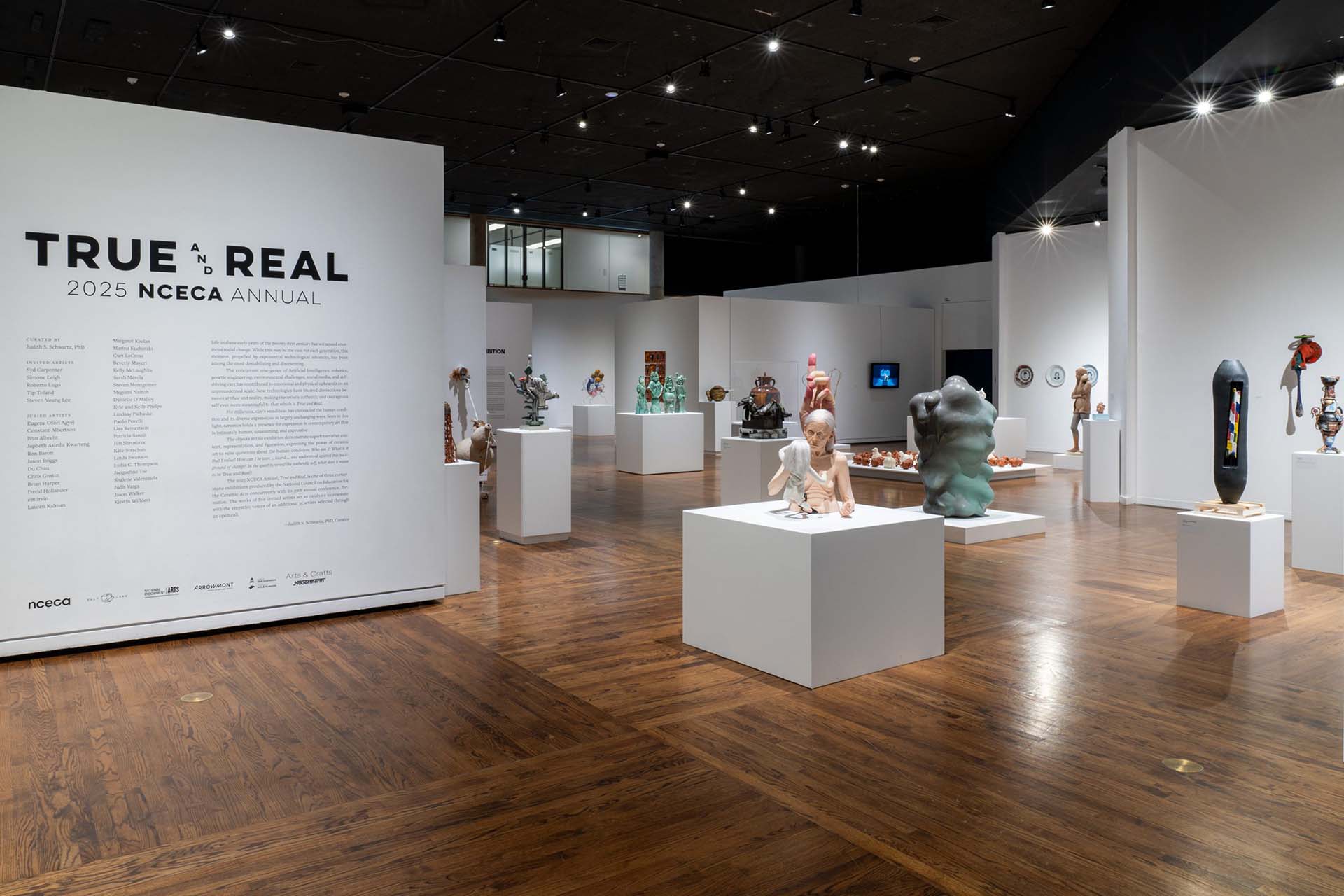
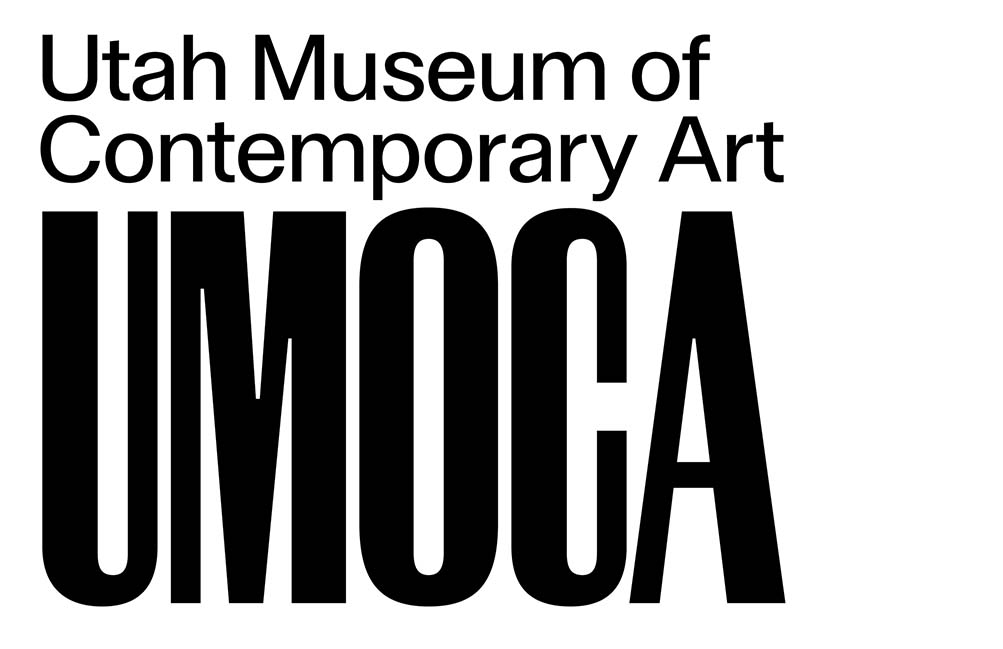
Utah Museum of Contemporary Art
20 S. West Temple
Salt Lake City UT 84101
Main text by Les Roka, with additional analysis by Richard Notkin and commentary by Wendy Tarlow Kaplan.
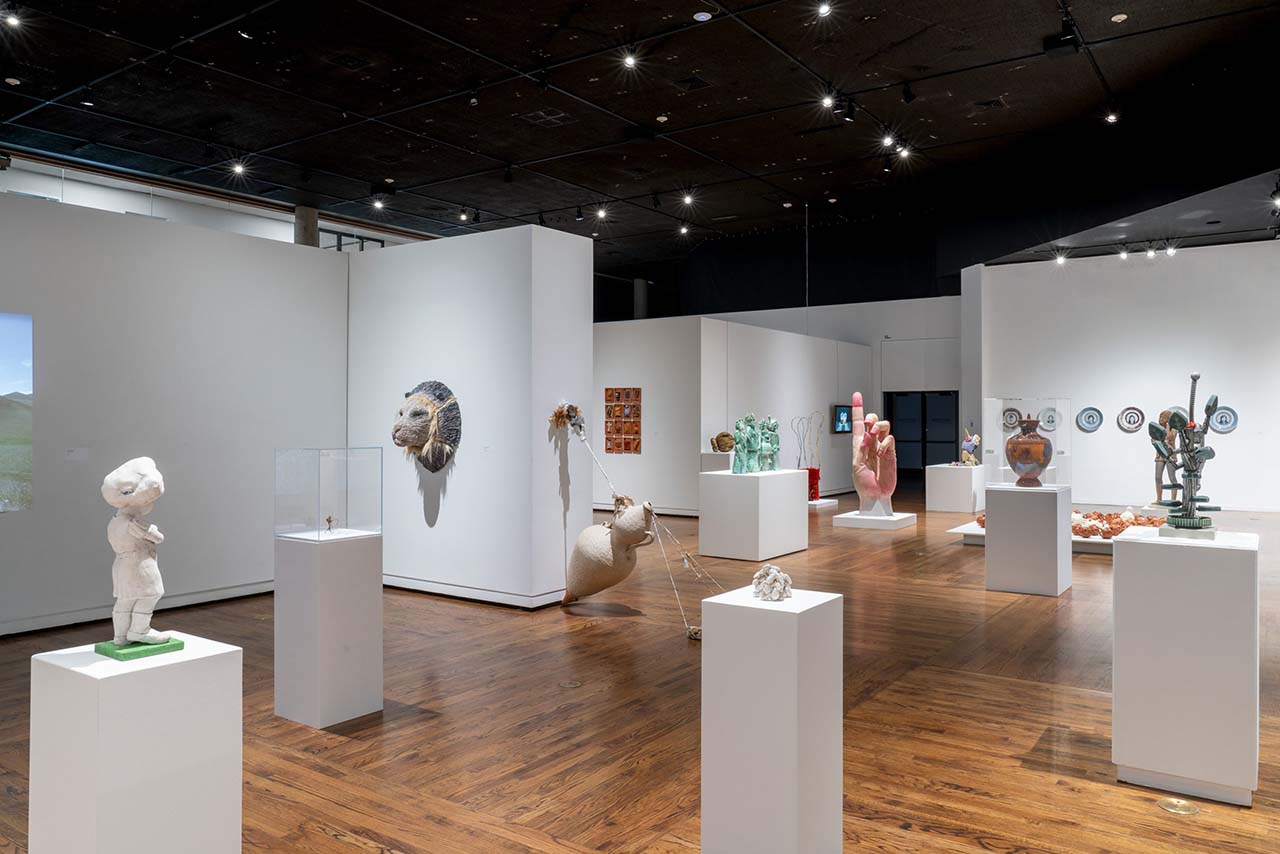
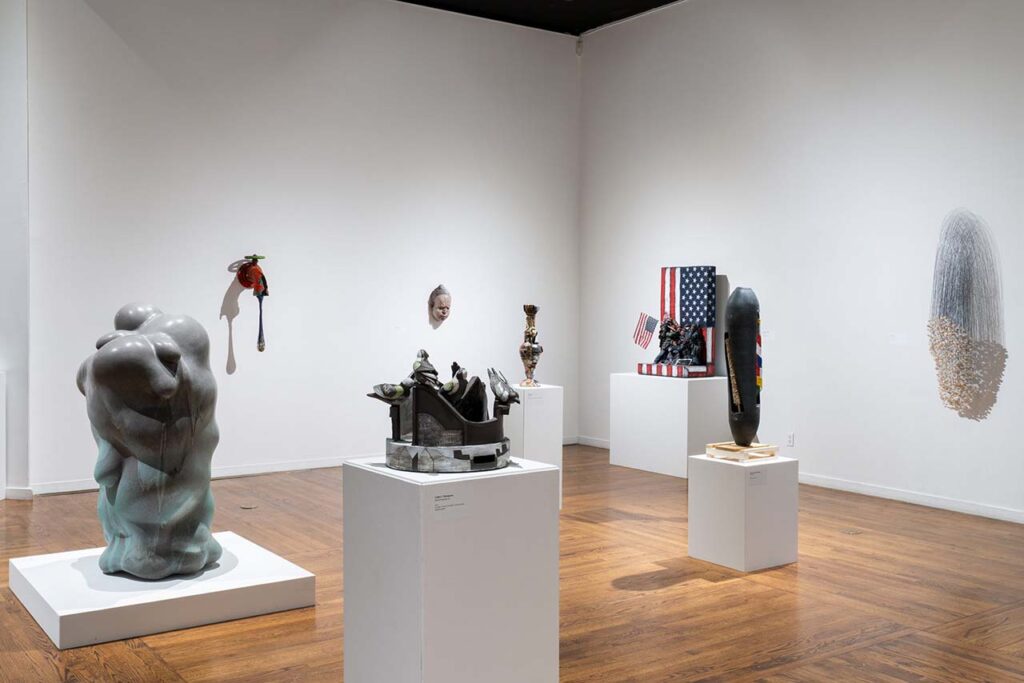
Continuing through the end of May, the Utah Museum of Contemporary Art (UMOCA) in Salt Lake City is hosting True and Real, the National Council on Education for the Ceramic Arts (NCECA)’s thematic cornerstone exhibition. Curated by Judith S. Schwartz with works from 40 ceramic artists that were selected from more than 600 submissions, this showcase examines the relationship between material, process, and personal truth in contemporary ceramic art. Mixed media plays a prominent role in True and Real, with sculpture, painting, installation, and video incorporated across many of the works.
The process reinforced and provided renewed evidence that the devices of irony, parody, obscenity, erotica, introspection, violence, dream imagery, metaphor, and the surreal continue to be vital in conveying ideas. The voices were unapologetic and articulated, asserting that the social condition is an intrinsic element of personal and cultural discourse as they unabashedly spoke to the true and real.
- Judith S. Schwartz, curator of True and Real
One example of mixed media elements in the exhibition is Constant Albertson’s Inter Caetera: Old Sins Cast a Long Shadow, a piece incorporating earthenware clay and sweetgrass. The title references the Catholic Church’s role during the era of New World exploration in attempting to erase the presence of Indigenous peoples. The work draws on the horrific legacy of Indian residential and boarding schools in North America.
Albertson’s piece is fashioned like a rosary, with beads that feature faces like those in archived photographs of Indigenous children who were placed in these schools. “This piece involved discussions with Indigenous leaders, archival image research, survivor testimonies, and material gathering,” the artist says, adding that the sweetgrass was harvested and braided under the supervision of Indigenous artists.
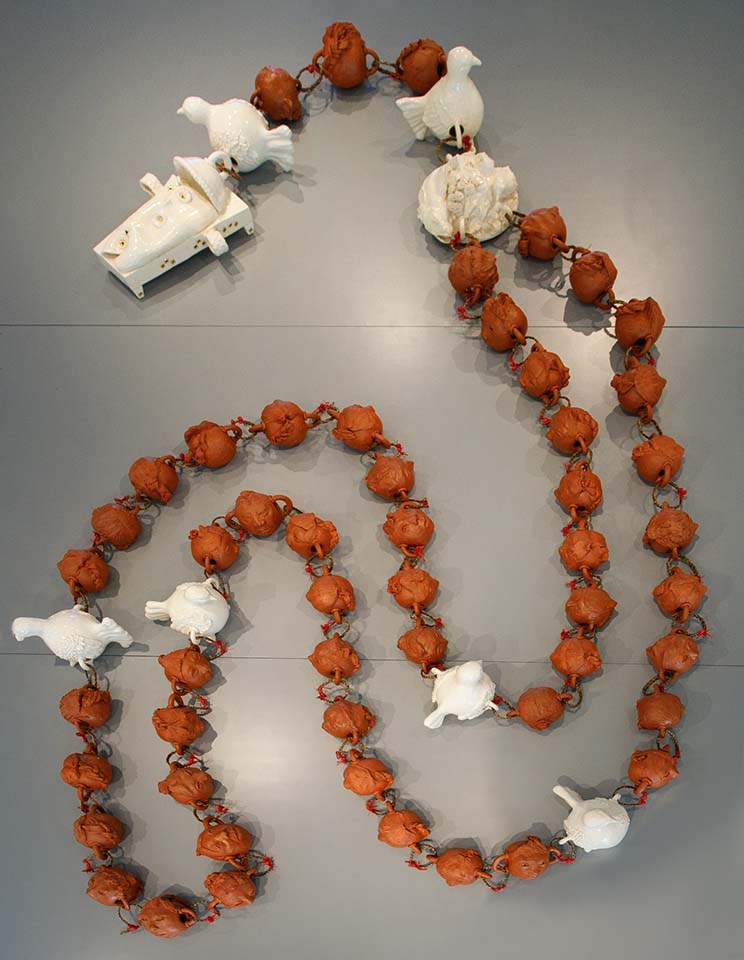
Syd Carpenter’s stoneware piece Laurie Mason is an ode to the practices of African American gardening and farming. The artwork’s sturdy and robust character emerges from the use of both fired and unfired clay materials across its surfaces. “Coiled, press-molded, slab-built, wheel-thrown, and found objects are all employed to construct my pieces,” Carpenter explained. “The scale of my works is intended to express the robust, deceptively powerful force within the growing tendrils, stalks, and branches.”
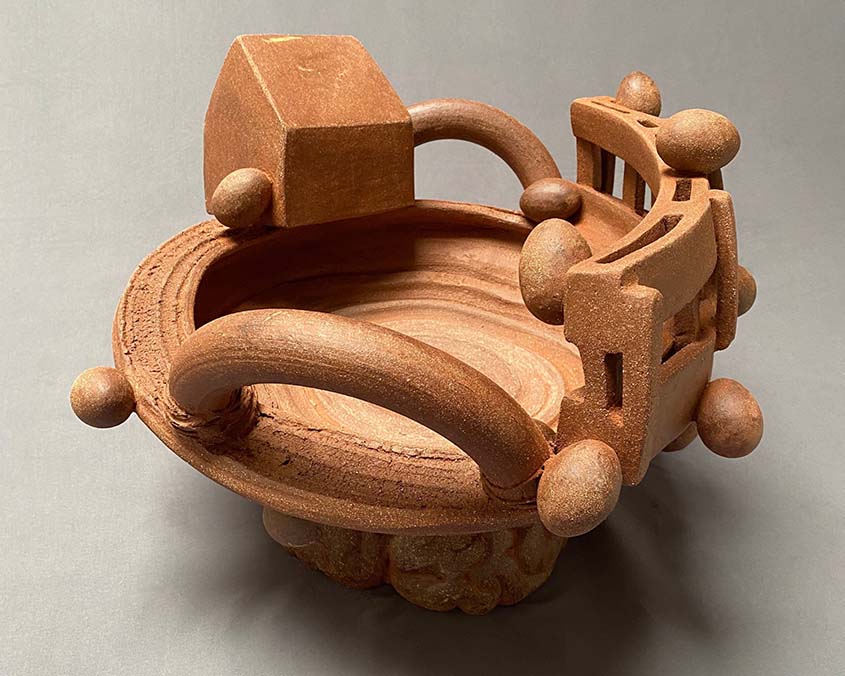
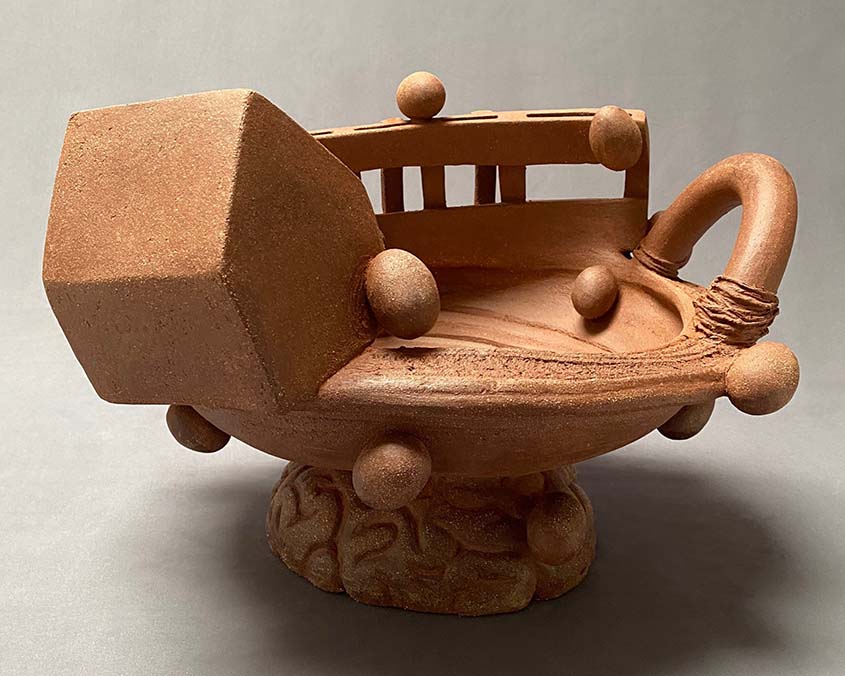
At first glance, Roberto Lugo’s glazed stoneware vase Prison Sequence appears to be a vestige of classical antiquity. But on closer inspection, Lugo’s astute social and anthropological lens rivets the viewer’s attention to the multigenerational litany of racial injustice, while also celebrating the cultural resilience of African American and Latino heritages.
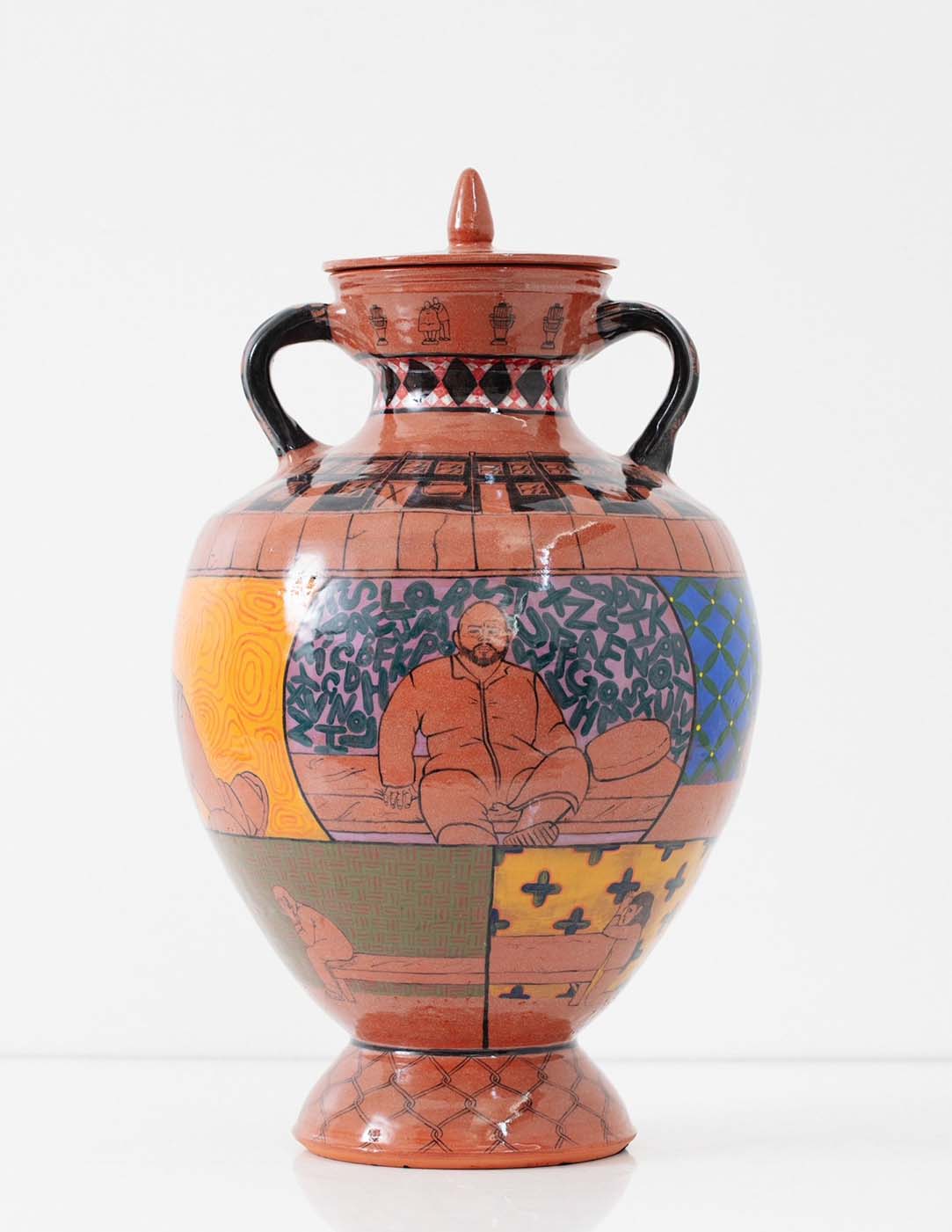
Likewise, in confronting discrimination, harassment, and marginalization, and in striving to realize the full ideals of democracy, vivid socio-political expression comes through in Insurrection by Kyle and Kelly Phelps. This 2023 mixed media work, composed of wood, cloth, stoneware clay, and paint, captures recent moments of dark confluence in American history, reverberating with unsettling threats to the project of democracy.
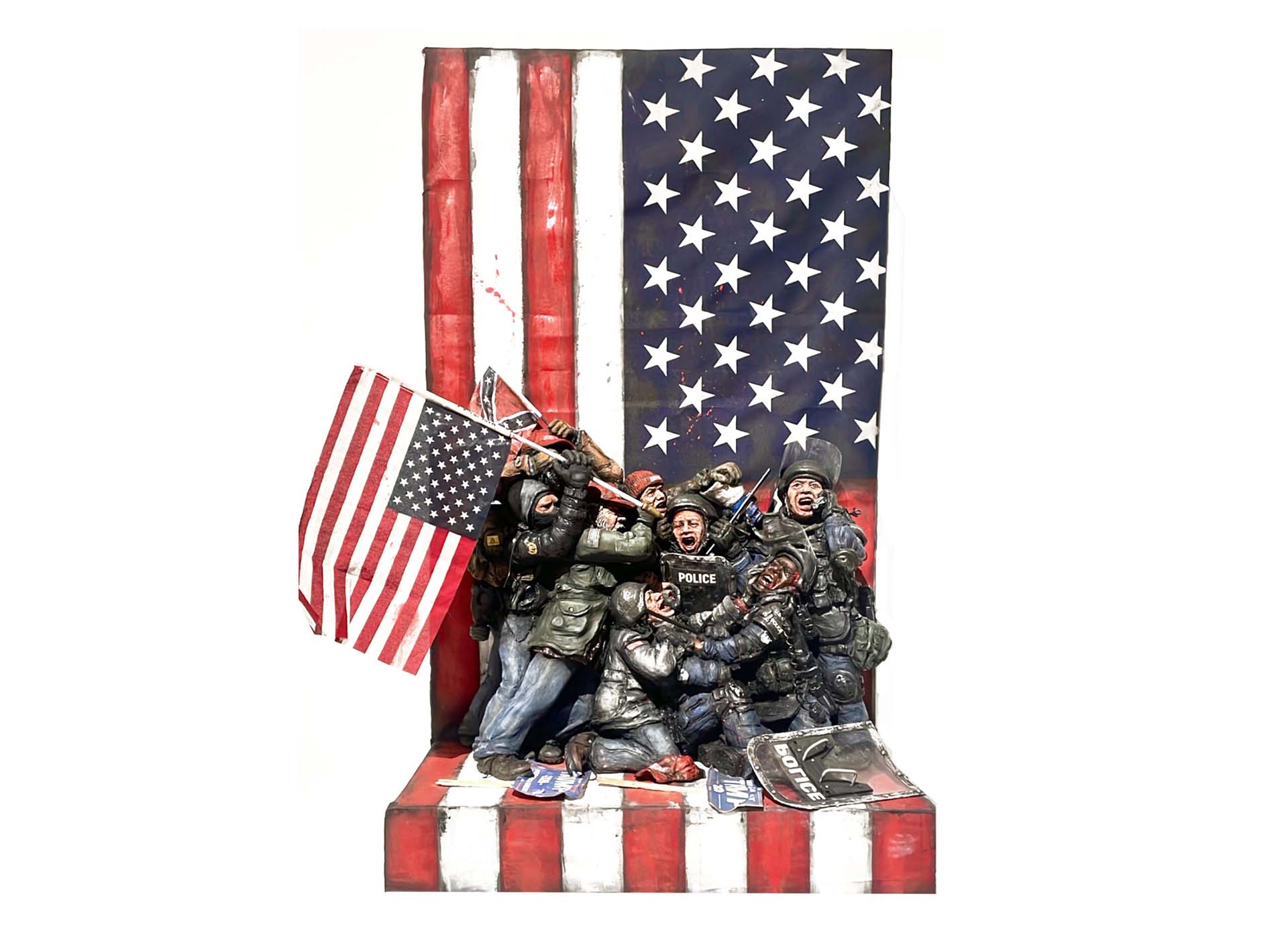
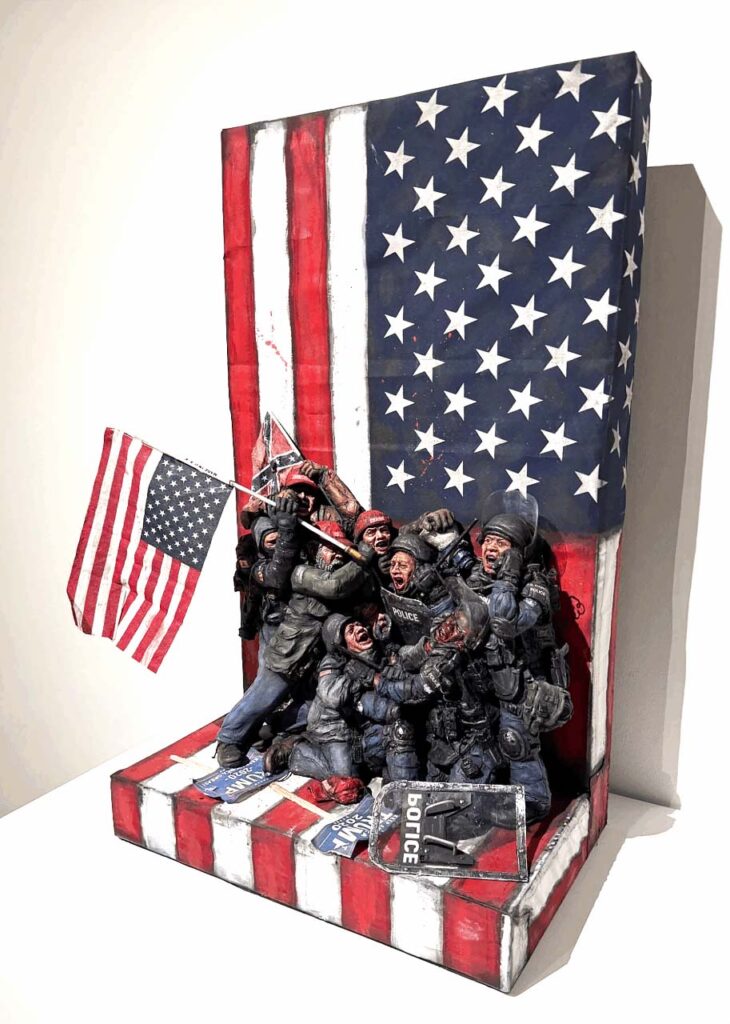
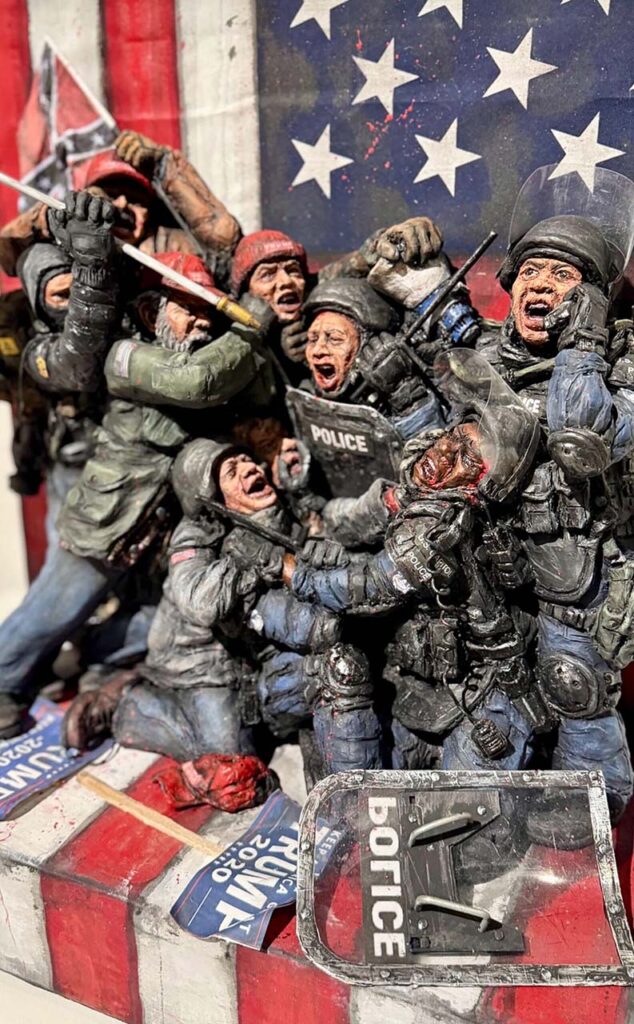
Richard Notkin on the Phelps Brothers
As a ceramic artist whose works have long been imbued with social and political commentary, I was drawn to Insurrection, by Kelly and Kyle Phelps. I have long been a fan of their many artworks depicting workers—many of color, mostly Hispanic and Black—in different blue-collar/labor-intensive industries, which capture the grist, the sheer toil, and the caste-system-like manner that keeps our culture economically unequal. Presented in a sort of folksy Norman Rockwell / Jack Earl hybrid manner, their works have the ability to appeal to the “every person” in our culture—those far outside the narrow parameters of more elitist Art World denizens.
In this aspect, I find the art of the Phelps twins to be most promising in moving a larger audience in profound ways. It is the skill of their modeling and highly developed aesthetic and techniques—which may sound a bit old-fashioned in the zeitgeist vernacular of our current times—that exemplifies my ideal: that art which embodies a social/political theme must be, first and foremost, strong art, both technically and aesthetically. It is the art which carries the message—the message alone will not carry the art.
During this particular time in our nation’s history, the overtness of “Insurrection" is beyond anything I have seen in any of the Phelp's past pieces. A timely moment captured from the January 6, 2021 attack on our nation’s Capitol, this powerful work captures the fierce confrontation of the insurrectionist/rioters as they attack a small group of Capitol Police. The emotions meticulously carved and painted on the faces of both attackers and attacked are powerful details that — like the upturned faces of the screaming woman and horse in Picasso’s great painting, “Guernica” — drive and accelerate the message and impact of the work. As Mies van Der Rohe stated, “God is in the details.” The Phelps Brothers certainly have a great grasp on that notion.
Richard Notkin on Jason Walker
Jason Walker has long examined the collision-like intersections of the natural world and human-made environments, raising visual questions in poetically illustrated porcelain. His piece, Trophic Cascade: Jaguar, is a three-dimensional crazy-quilt of organic and mechanical imagery morphing back and forth in Walker’s well-developed aesthetic style. In these times, Walker’s piece—pertaining to the plight of a specific endangered species—is one more chapter in his greater theme regarding the shared precarious existence of all species on this threatened planet. Like the Phelps brothers, Walker’s mastery of detail and highly developed levels of skill in both sculptural and illustrative technique draw the viewer into his art with a sense of amazement—hooked to then interpret the meaning of the piece. And as the poet chooses words and assembles a poem, the choice and arrangement of Walker’s imagery is the foundational brilliance of his art.
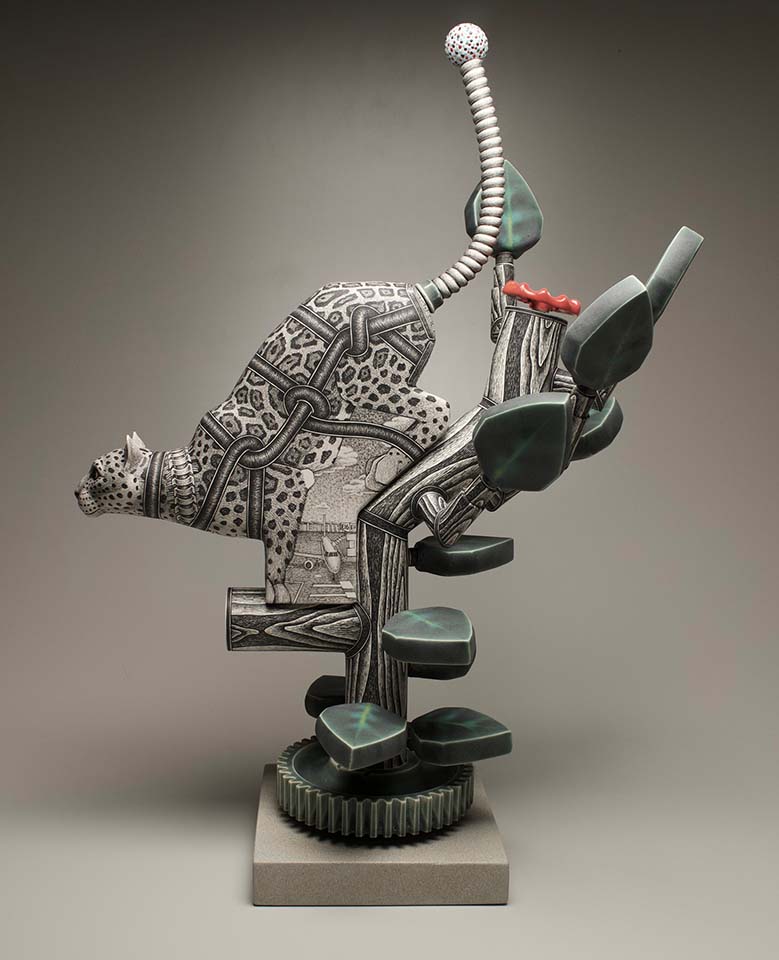
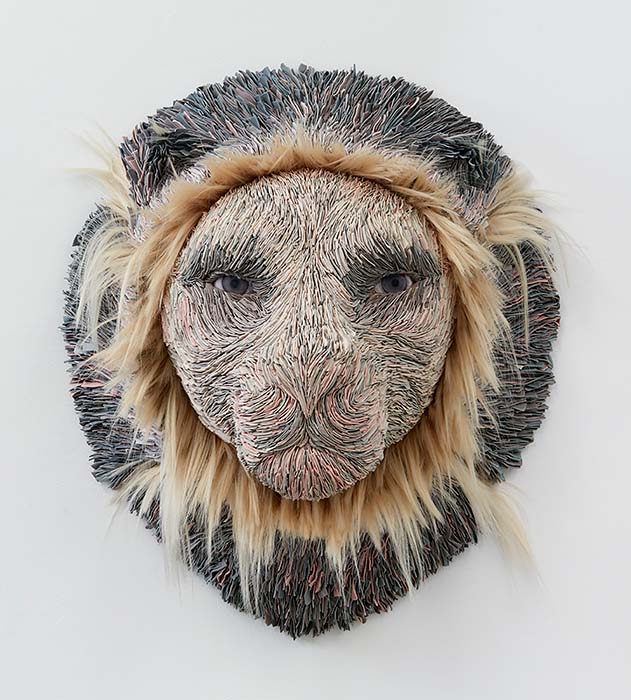
Lindsay Pichaske’s Souvenir, a sculpted death mask of a lion’s head, is created with extraordinary detail using stoneware, porcelain, mason stains, and hair. “The multiple parts were made by solid sculpting with stoneware clay, then hollowed and covered with strips of pigmented porcelain that follow an abstract pattern—and my hands were integral to every step of the process,” Pichaske explains. “In this age of new technologies, I believe it is more important than ever to have a physical connection to material and the hand.”
Richard Notkin on Jason Briggs
Roxie, by Jason Briggs, is a work in intricately modeled, carved, and meticulously detailed surfaces, post-fire finished with various mixed media elements, including human hair. While his works have long depicted amorphous blobs of human flesh—with an emphasis on rather gross abnormalities—this particular piece is more suggestive of the actual human body in its upright positioning, with the placement of an unambiguous penis, scrotum, and surrealistically modeled breasts. What has remained constant in Briggs’s work is the “yuck” factor—his ability to present the uncomfortable realities of our imperfect physical bodies, but in a perversely humorous, most delicious, ersatz candy-like sensibility. Unlike the sheer ugliness of the rotting skin of an Ivan Albright painting, Briggs’s work draws us into a visual dichotomy that juxtaposes our disgust and fear of the horrible with the curious prettiness of his pastel-colored, deliciously modeled, and sweetly detailed surfaces.
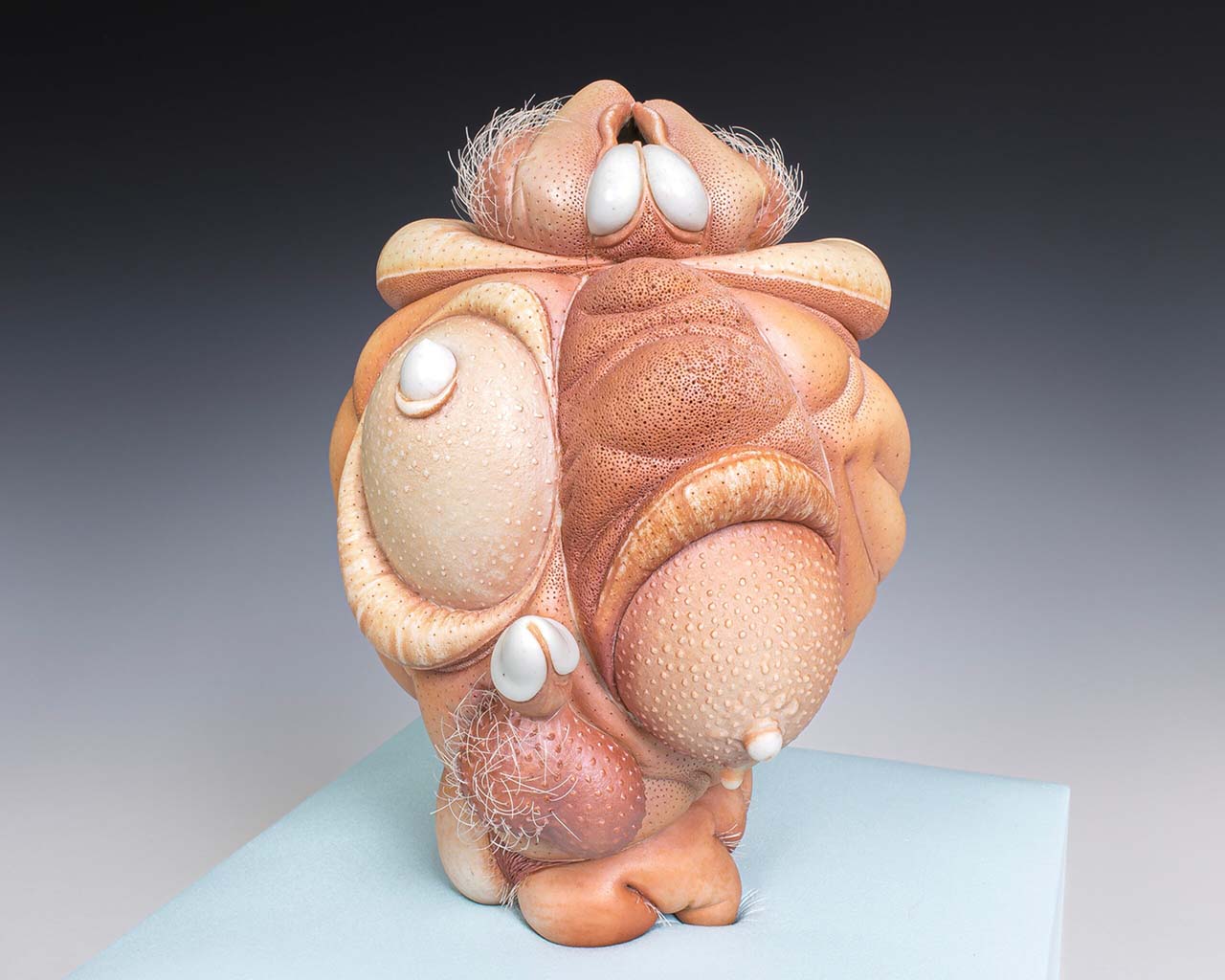
Natural science is at the heart of several True and Real artworks. Lydia C. Thompson’s Bird Formation #3 emerges from her research on bird migration and the interactions with glass and spaces resulting from the presence of humans. Thompson expands nature’s migration to its parallels in the migration history of Black people.
She draws attention to the fact that not everyone can enjoy the pleasures of birdwatching without fearing resistance or the tensions of facial profiling, such as the 2020 news story of Christian Cooper, the Emmy Award–winning science writer who was racially profiled by a white woman in New York City’s Central Park while he was birdwatching.
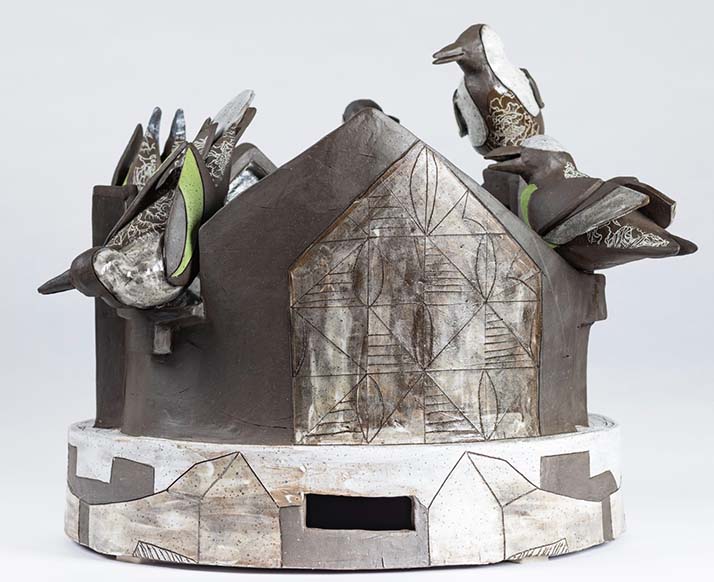
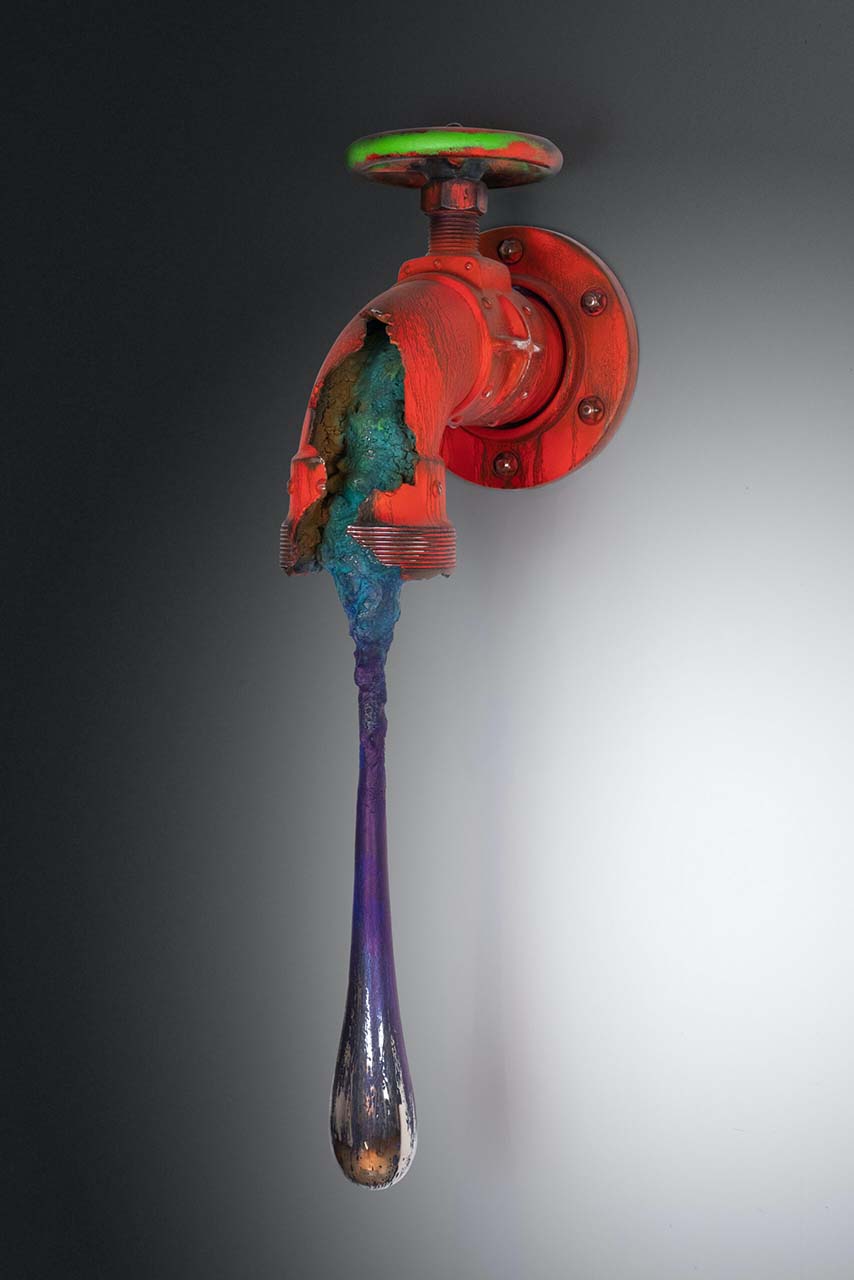
Richard Notkin on Steven Montgomery
Steven Montgomery’s Toxic Con continues his long series of ceramic sculptures which depict the ultimate failure of human-made implements. Past works included many large-scale cast-iron engines—broken, decomposing, rusting, and useless. This piece speaks to the dangers of our nation’s outdated and, in many cases, toxic water systems. Presented as a larger-than-life spigot, with much of the body corroded away to expose a viscous toxic brew morphing into a long drip, the skillful modeling of the clay and non-fired finishes imitating old paint and rust-like patinas are further examples of an artwork’s visual aesthetics underlying the strength of the message. No words are necessary, although the succinct title gives the piece its final punch.
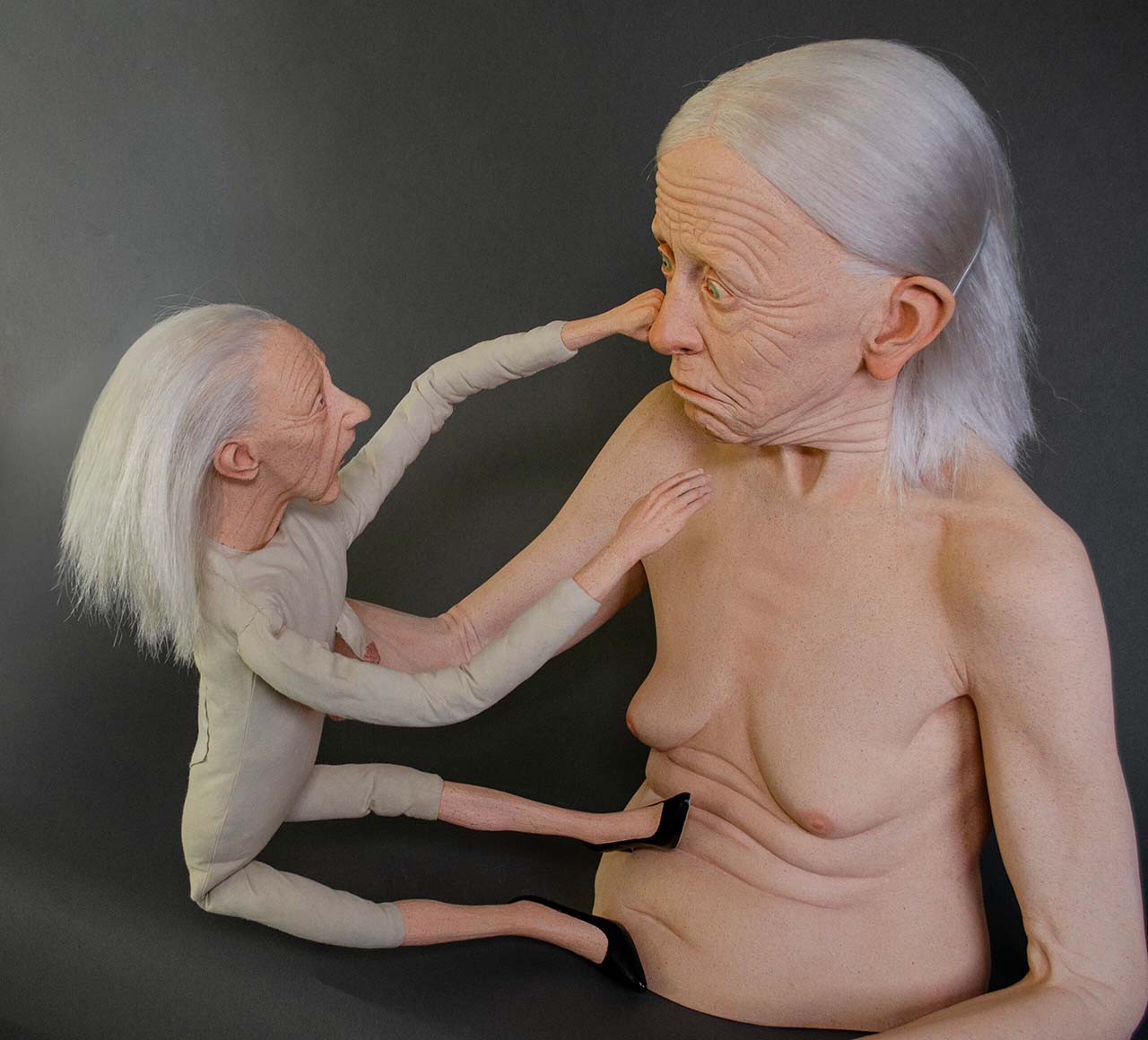
Known for her award-winning hyper-realistic ceramic sculptures, Tip Toland’s Enough is both autobiographical and universal. Toland notes, “The characters are always part of a narrative. Often, but not always, the narrative acts as a metaphor related to my inner world. The title, gesture, facial expression, coloration, hair, and often a prop are windows into the story. I hope the viewer sees the entire piece as one moment frozen in time.”
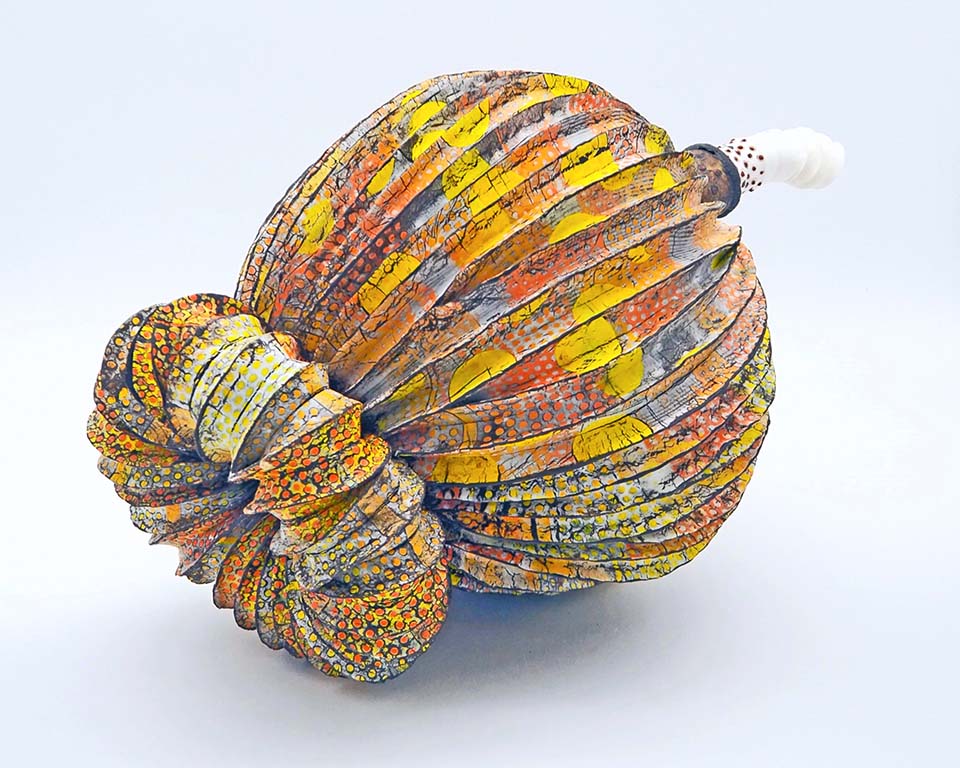
Exquisite in detail and form, Judit Varga’s Empty Yellow Pod comprises multiple-fired, low- and high-fired porcelain and colored stoneware with vitrified slips. The fragility and impermanence of life, nature, and homeland are expressed poignantly. “Empty Yellow Pod is holding my fears for a future when everything dissolves into an artificial existence,” Varga explains, adding, “Feelings are emptied and mute, replaced by addiction to a virtual reality where nothing is TRUE or REAL anymore.”
In an age where the shadows of artificial intelligence are lengthening, the collective of works presented in True and Real could not be more timely, as we contemplate the familiar and historical norms of what sentience and consciousness mean for humans in our times.
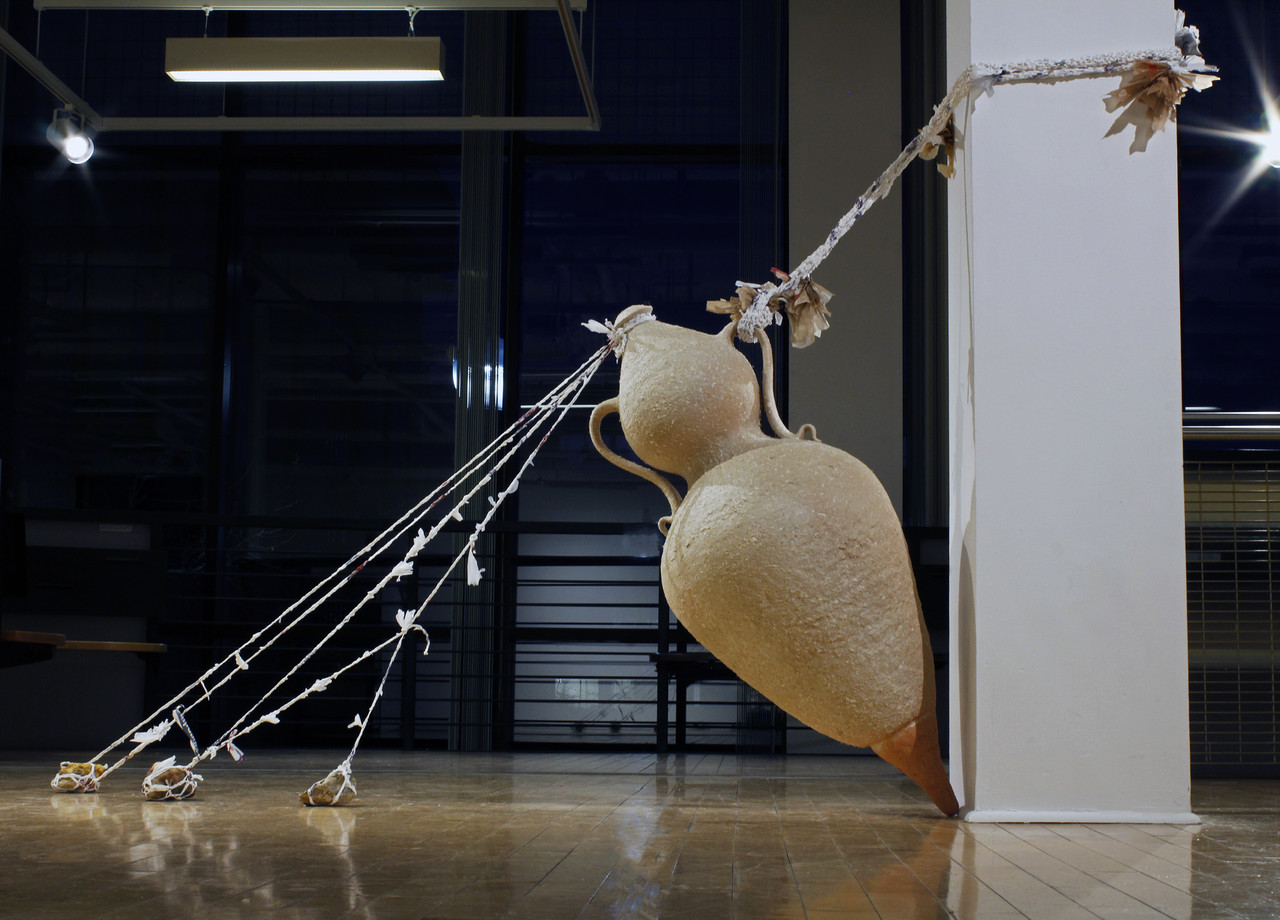
Closing Commentary from Wendy Tarlow Kaplan
What particularly impressed me was how the selected works transcended traditional ceramic categories. Functional forms reimagined as political statements. Sculptural pieces that reference vessel traditions while subverting expectations. Installation works that transform space and challenge our relationship to clay itself. This boundary-crossing approach reflects Schwartz's own interdisciplinary vision. Throughout her career, she has consistently championed ceramics that refuse categorization—work that is simultaneously craft, fine art, and social commentary. True and Real brilliantly manifests this philosophy.
In these times of trial and tribulation, "True and Real" offers exactly what we need: truth expressed through material, reality shaped by artistic hands, and the courage to confront our world as it is while imagining what it might become. We are all enlightened by Judith's vision and commitment to ceramics, which makes powerful statements resulting in an exhibition that will undoubtedly influence ceramic artists for years to come.
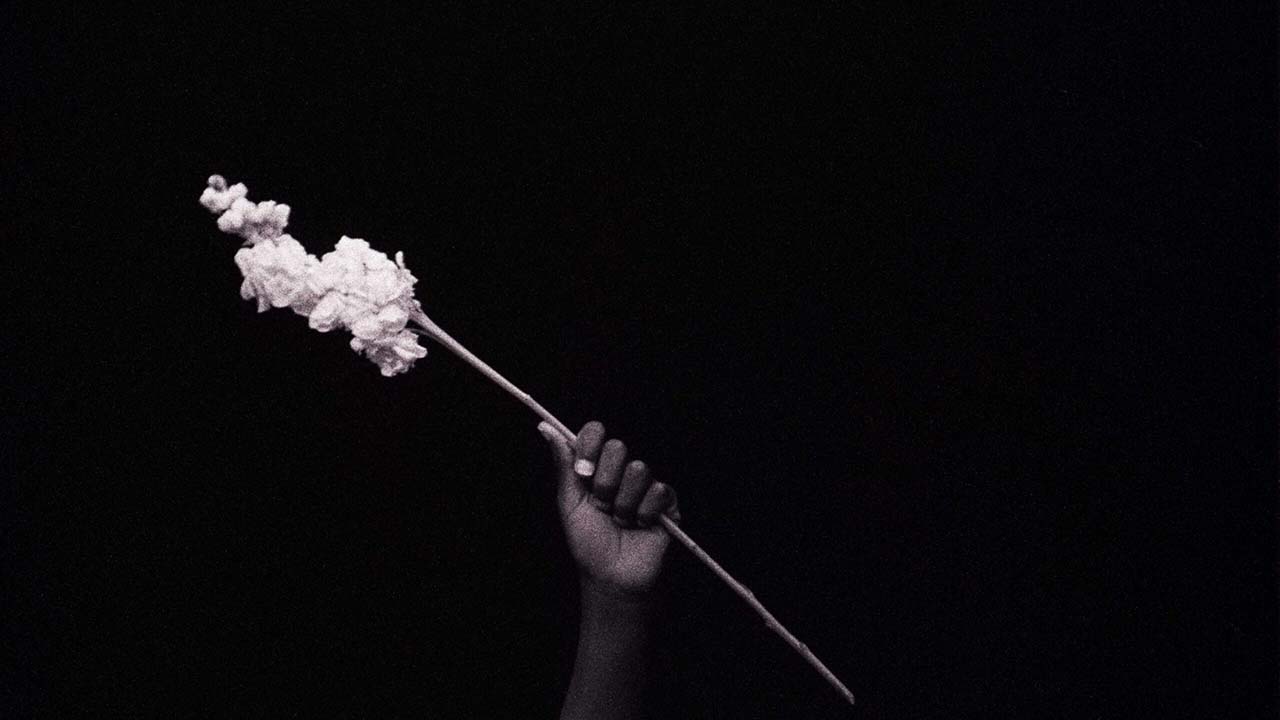
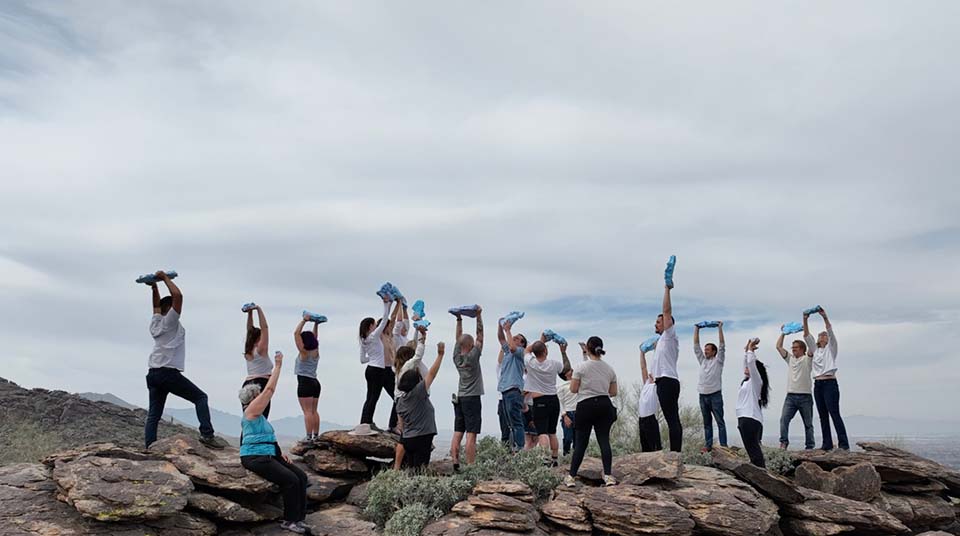

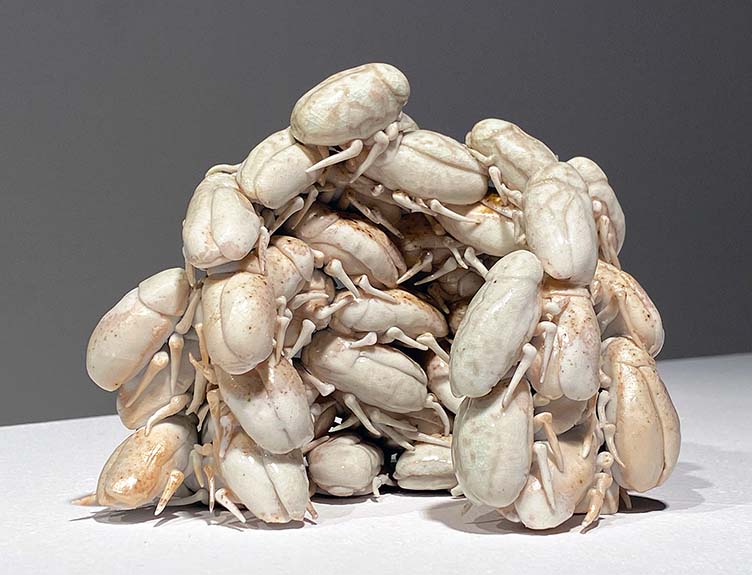
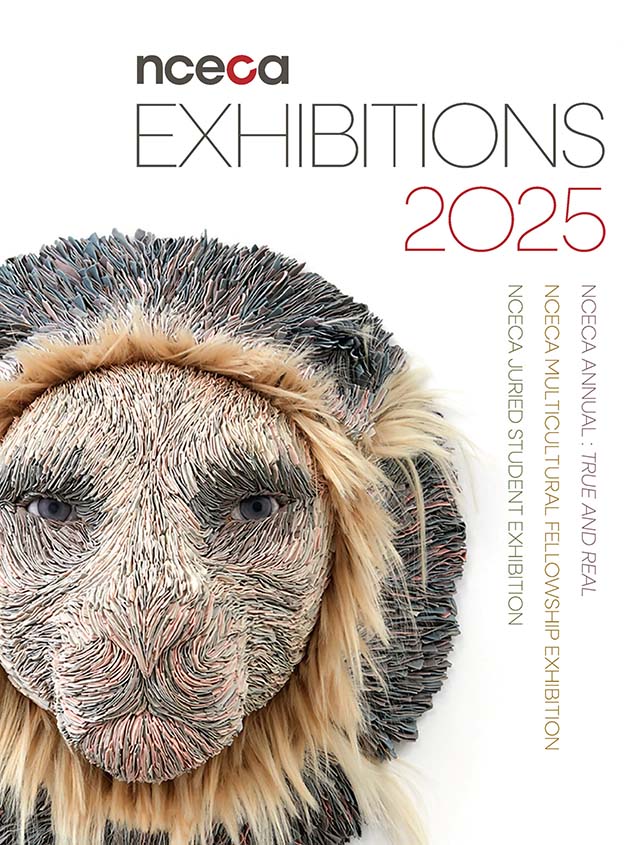
Dive into the vibrant world of ceramic arts showcased at NCECA's 59th Annual Conference held in Salt Lake City, Utah. The 2025 NCECA Exhibitions Catalog offers an in-depth look at featured artists, including Simone Leigh, Roberto Lugo, and Steven Young Lee, among others. This comprehensive guide provides insights into the exhibitions, artist statements, and curatorial perspectives that define this year's event!
Order the catalog here
Syd Carpenter, Simone Leigh, Roberto Lugo, Tip Toland, Steven Young Lee
Eugene Ofori Agyei, Constant Albertson, Ivan Albreht, Japheth Asiedu-Kwarteng, Ron Baron, Jason Briggs, Du Chau, Chris Gustin, Brian Harper, David Hollander, em irvin, Lauren Kalman, Margaret Keelan, Marina Kuchinski, Curt LaCross, Beverly Mayeri, Kelly McLaughlin, Sarah Merola, Steven Montgomery, Megumi Naitoh, Danielle O’Malley, Kyle and Kelly Phelps, Lindsay Pichaske, Paolo Porelli, Lisa Reinertson, Patricia Sannit, Jim Shrosbree, Kate Strachan, Linda Swanson, Lydia C. Thompson, Jacqueline Tse, Shalene Valenzuela, Judit Varga, Jason Walker, Kirstin Willders
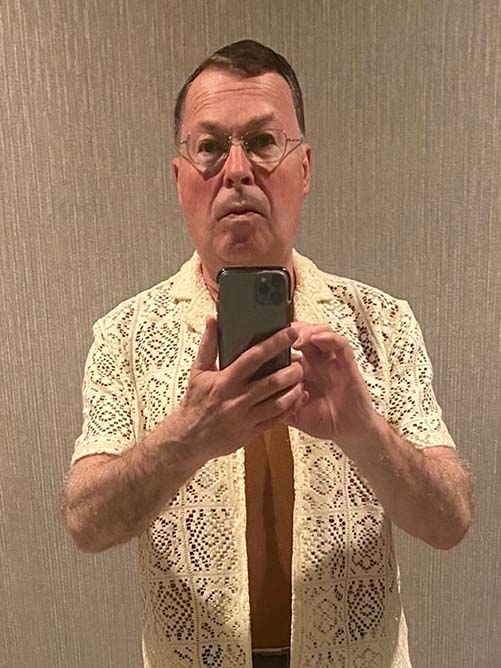
A Toledo, Ohio native with a doctorate in journalism from Ohio University, Les Roka runs The Utah Review, recognized as Utah's leading independent voice covering the state’s arts scene. The digital magazine primarily covers original works in art, ballet, dance, film, literature, music and theater, as well as arts education.
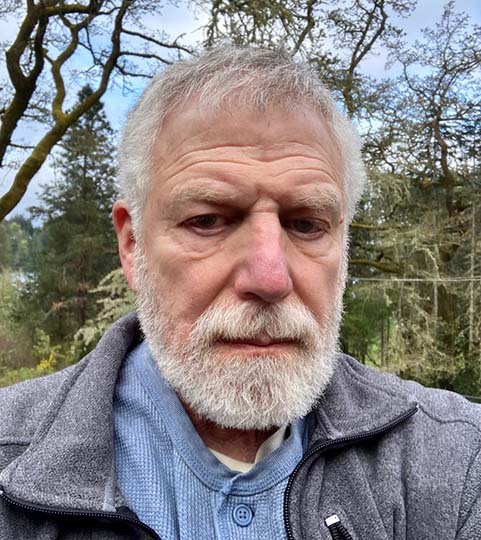
Richard Notkin’s artworks are stages for social/political commentary. Since 1975: 50 one-person exhibitions, 350+ workshops and 80+ museum collections internationally. Select awards: NEA (3), Guggenheim Memorial Foundation, Louis Comfort Tiffany Foundation and United States Artists Foundation. Notkin is a Fellow of the American Craft Council and Honorary Member of NCECA. Learn More
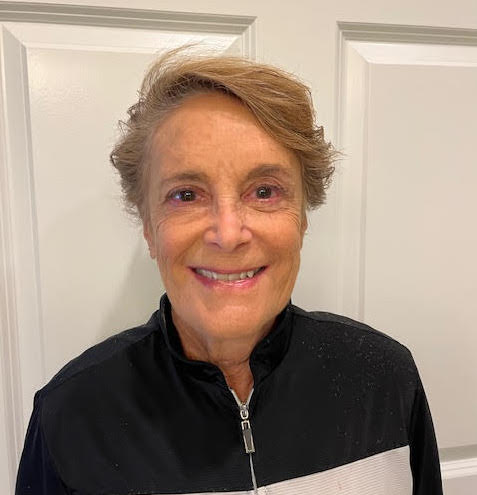
Wendy has been a professional curator for over 35 years with a major exhibition of contemporary Danish ceramics at the Museum of Arts and Design. She is a writer for Art New England and contributed to the Encyclopedia of New England published by Yale University Press. She has also served as a juror and is a board member of MoCA/NY.
